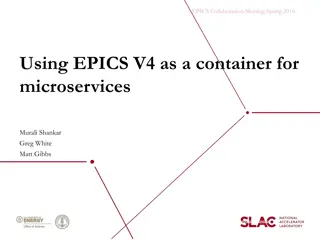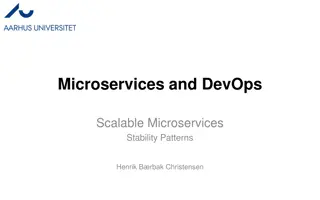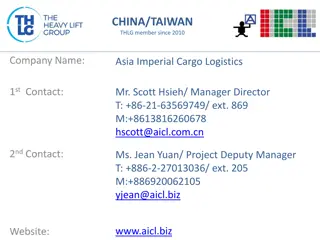Empowering Imperial's Future with Microservices: Advantages, Challenges, and Benefits
Embracing microservices can bring agility and scalability to Imperial's future product strategy through independent deployment, small focused teams, fault isolation, scalability, and data isolation. However, challenges such as complexity, development/testing, lack of governance, network congestion/latency, and data integrity must be addressed. Users can benefit from enhanced flexibility, mobility, data analytics, collaboration, data security, automatic software updates, disaster recovery, and reduced carbon footprint.
Download Presentation

Please find below an Image/Link to download the presentation.
The content on the website is provided AS IS for your information and personal use only. It may not be sold, licensed, or shared on other websites without obtaining consent from the author.If you encounter any issues during the download, it is possible that the publisher has removed the file from their server.
You are allowed to download the files provided on this website for personal or commercial use, subject to the condition that they are used lawfully. All files are the property of their respective owners.
The content on the website is provided AS IS for your information and personal use only. It may not be sold, licensed, or shared on other websites without obtaining consent from the author.
E N D
Presentation Transcript
Imperial Future Product Strategy
Imperial Environments CURRENT PermitSmarti 3SW 360NP CitySmarti CitySmarti CitySmarti Bristol/ Northampton hosted Customer hosted STAGE 2 STAGE 1 FUTURE PermitSmarti 3SW 360NP Azure Azure Azure Virtual Desktop
Timescales Stage 1 Stage 2 3-6 months Move PermitSmarti into Azure 6-12 months 360 to Citrix Cloud 3SW into Azure
What are Microservices? Hosted in a public cloud (Azure, AWS) Small, independent, and loosely coupled services. Each service is a separate code base. Services can be deployed independently. Services communicate through well defined Application Programmer Interfaces. Supports polyglot programming services don t need to share the same technology stack, libraries or frameworks.
Microservices Advantages Agility as services are deployed independently it s easier to manage bug fixes and future releases. Small, focused teams microservices are small enough to be built, tested and deployed by a small team. Small code base microservices minimise dependencies and that makes it easier to add new features. Fault isolation if an individual microservice becomes unavailable it won t disrupt the entire application. Scalability services can be scaled independently so subsystems can be scaled out without scaling the entire application. Data isolation It s easier to perform schema updates as only a single microservice is affected. Monolithic applications may have many parts of the application touching the same data introducing risk to updates.
Microservices Challenges for Imperial Complexity there are more moving parts to look after. Development and Testing microservices development requires a different approach than writing a traditional monolithic application. Lack of governance it s possible to end up with different frameworks and languages making the application hard to maintain. Network congenstion and latency small granular services can lead to more interservice communication and if the chain of service becomes too long latency can become a problem. Data integrity as each service is responsible for their own data consistency across the service can be a challenge.
Benefits to our Users More flexibility & scalability quickly meet business demands Mobility smartphones and devices Better data analytics Improved collaboration speed of delivery Enhanced data security easier to make government compliance Automatic software updates saving your time Quick disaster recovery and backup The reduced carbon footprint for a better environment























